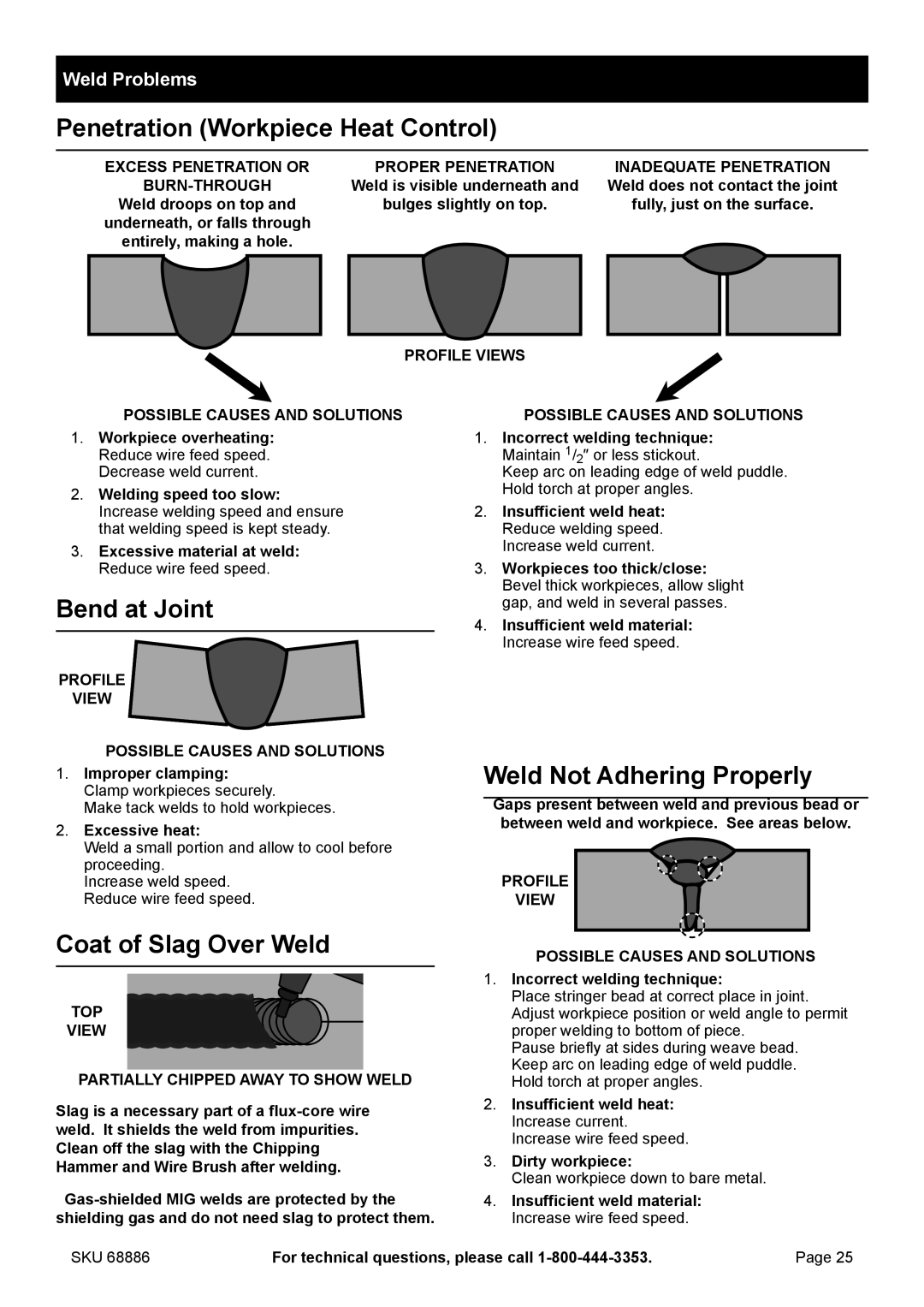68886 specifications
The Chicago Electric 68886 is a notable model in the landscape of woodworking routers, designed to provide both amateurs and professionals with an efficient and reliable tool for various routing applications. This tool combines performance, precision, and user-friendly features, making it ideal for both simple and intricate woodworking projects.Featuring a 2.5 horsepower motor, the Chicago Electric 68886 offers plenty of power to manage tough materials without bogging down. Its variable speed control allows users to adjust the RPM from 8,000 to 25,000, enabling optimal performance across different types of woods and tasks. This feature is particularly useful for achieving a smooth finish when working on delicate projects or when adjusting to the hardness of various wood types.
One of the standout characteristics of the Chicago Electric 68886 is its depth adjustment system. This feature allows for easy and accurate depth settings, ensuring that users can make precise cuts and grooves. The integrated fine depth adjustment knob provides a smooth and efficient experience when setting the cutting depth, contributing to flawless results.
Safety is another critical aspect of the design. The router comes equipped with a safety switch that reduces the risk of accidents during operation. Additionally, the durable base and built-in moisture seals provide extra protection against wear and tear, ensuring longevity and reliability in the workshop.
The Chicago Electric 68886 also features a standard 1/4-inch collet, accommodating a wide variety of router bits, which opens up a plethora of routing possibilities. This versatility is a significant advantage for users who wish to tackle different projects, from decorative edges to functional joinery work. The ease of bit change ensures that switching tasks is convenient and efficient.
In terms of ergonomics, the router's design includes a comfortable grip and balanced weight distribution, allowing for extended use without causing fatigue. This attention to user comfort enhances overall productivity, making it a great addition to any woodworker’s toolkit.
In summary, the Chicago Electric 68886 excels with its powerful motor, variable speed control, precise depth adjustment, safety features, and versatility in bit compatibility. Its ergonomic design makes it suitable for prolonged use, ensuring that it meets the needs of diverse woodworking applications, from hobbyist to seasoned professional. With its reliable performance and user-friendly features, the Chicago Electric 68886 remains a worthwhile investment for anyone looking to enhance their woodworking capabilities.

